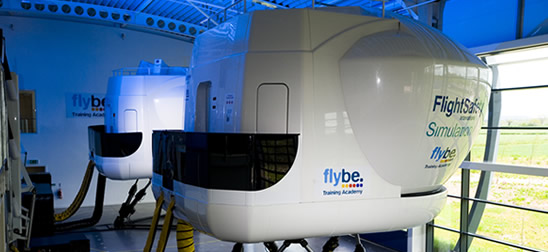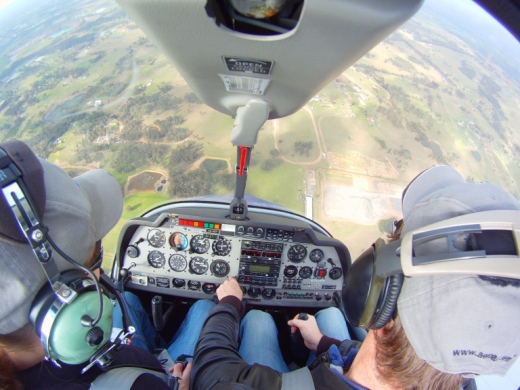
Even though serious business games and gamification is a white hot topic it is still relatively early days in the extent to which businesses use simulation in their organisations in a systematic and strategic way.
We can contrast this with the use of simulation in commercial aviation. How many of us would choose to fly with any commercial airline which boasted that it did not use flight simulation to train its pilots and air crew? As a qualified private pilot I thought it would be useful to briefly look at the use of simulation in aviation to see if there are any lessons we can draw about the use of simulation in business.
In commercial aviation flight simulation is used extensively in 3 main areas:
- Skills Training
- Emergency Procedures
- Type Conversion
The main benefits are measured in 3 main dimensions:
- Safety
- Costs
- Environmental Impact
Let’s briefly look at each of these areas in turn to see how they might relate to the use of simulation in business:
1. Skills Training
Published statistics show that pilot error accounts for 49% of all aviation accidents and a whopping great 83% of all private aircraft accidents. "Pilot error" can be defined as any mistake, oversight, lapse of judgment, or failure to exercise due care by the pilot of an aircraft while it is in operation. The most common examples of pilot error include:
- Incorrect use of aircraft equipment, such as safety or landing gear
- Errors in navigation, sometimes due to inclement weather
- Miscommunication with air traffic controllers
- Inadequate monitoring of speed, altitude and other flight parameters
- Failure to manage fuel levels
- Failure to follow procedures in safety checklists
Application to Business: Skills Development
There is a lovely golf quote which over its life has been attributed to three of the all-time greats (Arnold Palmer, Gary Player and Lee Trevino) which suggests “the more I practice the luckier I get"? Do you really want your managers and leaders learning their skills as rookies using your live business with no safety net? Business Simulation can be used for all kinds of skill development for Leaders, Managers and Practitioners.
Typical topics which are well served include key management skills such as Change Management or Team Leadership and Executive Skills such as Commercial Acumen in running whole company or business unit.
2. Practicing Dangerous Manoeuvers

Picture: Cockpit view from an aircraft in a spin
Practising dangerous manoeuvers is in itself a very dangerous thing to do!
In the early days of aviation there was no agreed recovery for a spin (which is a stall of only one wing). This is a particularly dangerous flight state as the recovery is counter-intuitive – if you do the obvious things you will not be able to recover the aircraft.
Now once an agreed recovery technique was discovered it then made its way into the pilot training syllabus as you would expect. However its use in training was controversial as a significant number of pilots under training (and their instructors) were killed attempting to recover from deliberately induced spins. This became such an issue that eventually some national aviation bodies began to recommend that spin training should only be attempted in approved flight simulators. So the use of flight simulation here has saved many pilots lives.
Application to Business: Company War Games
Most businesses do not encounter dangerous situations until they encounter them for real! Therefore the first, often ham-fisted, attempt at recovery is often the only attempt the business will get. Business War Gaming using simulations allows leaders and managers in organisations to be presented with dangerous situations but in a learning environment which is totally safe and which will not crash the business if they get it wrong.
Realism and customisation is key here. To take another aviation example – it is documented that fighter pilots actually scream when they crash their flight simulators under simulated combat conditions as they have become so immersed in the simulation that it feels like a live mission. Business War games can easily use senior business executives and realistic paperwork/ briefings to create the sense in the delegates that this is not a drill!
3. Type Conversion
There are currently four levels of Full Flight Simulator, levels A - D, level D being the highest standard and being eligible for Zero Flight Time (ZFT) training of civil pilots when converting from one airliner type to another. Flight simulators are now so good that a new captain can make his very first landing in a particular type of jetliner, with revenue passengers on board, i.e., all his previous landings in that type of airliner were in the simulator.
Application to Business: Talent Development
Simulation can be used very effectively to induct new staff and fast track talent by exposing them to business simulation games which have been designed using the knowledge of the most high-performing and experienced Subject Matter Experts from the organisation (SMEs). Using this approach the expert’s key rules and judgements can be encoded into a simulation and if the participants (supported by coaching) make the same judgements they will score well in the simulation and if they don’t they will score badly.
This approach delivers effective and fun business acumen transfer to a community of practitioners through a process of self-discovery.
Summary
We can learn very important lessons from aviation about the power of simulation to help organisations develop new skills (Serious Games), practice dangerous business manoeuvers safely (War Games) and develop talent quickly through Subject Matter Expert (SME) Games.
REFERENCES “The impact of flight simulation in aerospace” Specialist Paper December 2010 by The Royal Aeronautical Society